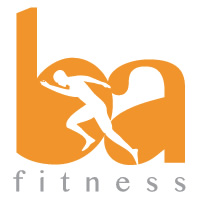Personal Trainer Bristol Principles of Training – Recovery
Continuing with the “Principles of Training” blog, we now look at how recovery fits into the five main principles; Specificity, Progression, Overload, Recovery, Reversibility.
It is understandable that, there you are, making great progress in your training. You have a goal to work toward. Your training is specific to the event you have entered. You are starting to see the fruits of your labour from all the technique progression and physical (training) overload that you have been putting in. Carry on like this and you are surely onto a winner…
And then… Injury.
At best, will mean you need to reduce the type, volume or intensity of training. At worst, could set you back weeks or even months. What started out as a little ache during /after training, developed into a niggle. Then a bit of a pain. By now, your technique has already started to suffer as you subconsciously, or even consciously, have adapted your style to protect the injured area. The knock-on effect is that other non-injured areas are now picking up the workload during training and, as such, will be developing at a different rate to the injured area causing further imbalance and potential for other injuries.
Like any machine, mechanical or biological, if you keep running it or keep pushing it harder without any break, then it will break. In the case of the human body, you will get injured.
Often overlooked or misunderstood, recovery is an important and crucial part of any training regime. How much recovery and what type of recovery is required, all depends on the individual. Age, weight, nutrition, previous training experience, health, current fitness levels etc will all play a part in how quickly you will be able to recover properly.
Recovery is, a) the period where the body heals and, more importantly, b) the period where improvements are made.
Whenever we train we generally aim to take our body out of its comfort zone and to place (controlled) stresses on our muscles, bones, ligaments and tendons. As a result we cause very minor tears in our muscles, otherwise known as ‘microtrauma’. (Nb, I deliberately highlight the muscles, as these are the weakest of the structures mentioned, so therefore most susceptible to injury.)
The higher the intensity of training (think of circuit training / boxercise / bootcamp / plyometrics etc) then the more of these muscle microtraumas will occur. It’s these sort of exercises that are much more likely to cause muscles to tear to the point of injury, than compared to more of your endurance events such as distance running, cycling, swimming etc. These microtraumas are perfectly natural if managed properly, but you need to give your body the opportunity to repair.
It’s no different to if you cut yourself on the arm for example – moving the cut area around quickly, not protecting the site, or even picking at the scabs (yes you do…!) is obviously going to take longer to heal. It’s no different to what’s going on to your muscles inside your body.
The second part of the recovery period is the ‘improvement’ phase. In response to the microtraumas mentioned above, the body reacts not just in a restorative manner, but it also overcompensates in the healing process. This is done to protect the body from other bouts of stress in the form of ‘damage limitation’.
The obvious example is in the case of muscle repair. More protein is laid down than is required and, providing you train regularly and maintain the overload principle, then this is where muscle growth (hypertrophy) occurs.
A less obvious example is in the case of bone growth, or rather, density. Bones receive the stress from the muscles / tendons pulling on them and there is some flex in the bones. When this flex occurs, this provides the stimulus for the laying down of calcium to reinforce the bone density and therefore, strength.
This is particularly poignant for females who are more at risk of osteoporosis (brittle bones) in later life. Numerous independent scientific studies, have shown that weight bearing exercise has helped to reduce the natural regression of bone density, in females (and males). It’s never too late to start!
So how much recovery do we need then? Unfortunately, as with most things in life, there is no hard and fast rule. The untrained 20 year old may require greater recovery time than a trained 50 year old, for example.
The key piece of advice is to listen to your body. We all get the post workout / exercise soreness (Delayed Onset of Muscle Soreness – or DOMS), but rather than just sit and wait for it to pass – it could take up to 3 / 4 days – get moving again with some gentle exercise that isn’t of overload nature. This increased blood flow will rid the body of the waste products, as well as supplying the affected areas with the required nutrients to enable repair.
Exercise where your body weight is supported, and also moving your exercised joints in a different way to which you were originally overloading them. Eg, If you train to run, then cycling / swimming would be an alternative. The same can be said if you’re into weight training, or try using lighter weights in different ranges of motion.
By getting into the good habits, then your body will adapt a lot quicker and your recovery time will reduce. Find the balance and, if in doubt, speak to an exercise professional.
Until then, stay fit, stay healthy and enjoy your training!
Yours in good health,
Ben
